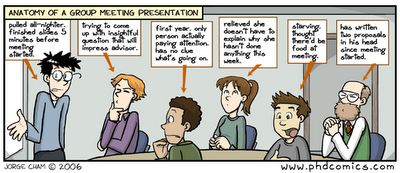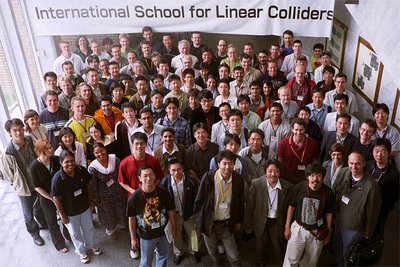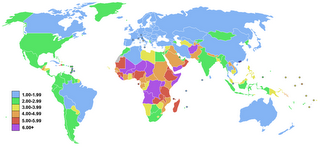Group Meeting Presentation
Every Tuesday morning our lab gets together for a weekly meeting, and then afterwards someone has to give a presentation. Normally we take it in turns each week, but I’ve been away a bit and skipped my last few chances, and it finally caught up with me yesterday. Usually the person giving the presentation explains what they’re working on, or they introduce a recent physics paper, and we all go through it and tear it to shreds together. I decided to go a different route, however, and give a summary of what I learnt at the ILC school last month.
I spent most of the night before going through and copy/pasting the slides from the lectures notes. In the end I had to condense so much out of it, and then make up for the gaps with other slides of my own, that it wasn’t as time effective as I thought it would be. I ended up with way too many slides, and I only got through a rough intro, and an explanation of the electron and positron sources and capture section. It’s my turn again four or five weeks from now, and I’ll try and finish off the rest of the machine then.
Overall the reception from our professor and the second year masters students and doctors students was pretty good, but the new students were fairly quiet throughout the whole ordeal. I’ll have to try a bit harder for the next talk. On the bright side, one of the kouhais sounded interested, and is thinking of attending the ILC school the next time it is held.

Suprisingly accurate comic courtesy of PhD.
I spent most of the night before going through and copy/pasting the slides from the lectures notes. In the end I had to condense so much out of it, and then make up for the gaps with other slides of my own, that it wasn’t as time effective as I thought it would be. I ended up with way too many slides, and I only got through a rough intro, and an explanation of the electron and positron sources and capture section. It’s my turn again four or five weeks from now, and I’ll try and finish off the rest of the machine then.
Overall the reception from our professor and the second year masters students and doctors students was pretty good, but the new students were fairly quiet throughout the whole ordeal. I’ll have to try a bit harder for the next talk. On the bright side, one of the kouhais sounded interested, and is thinking of attending the ILC school the next time it is held.

Suprisingly accurate comic courtesy of PhD.




